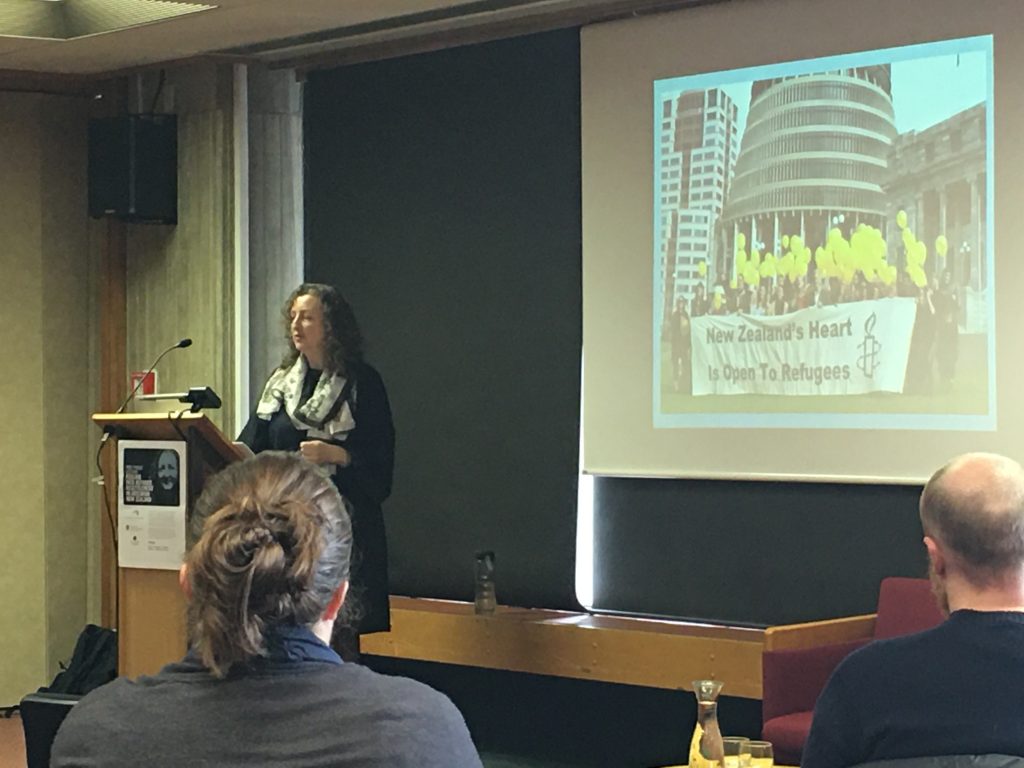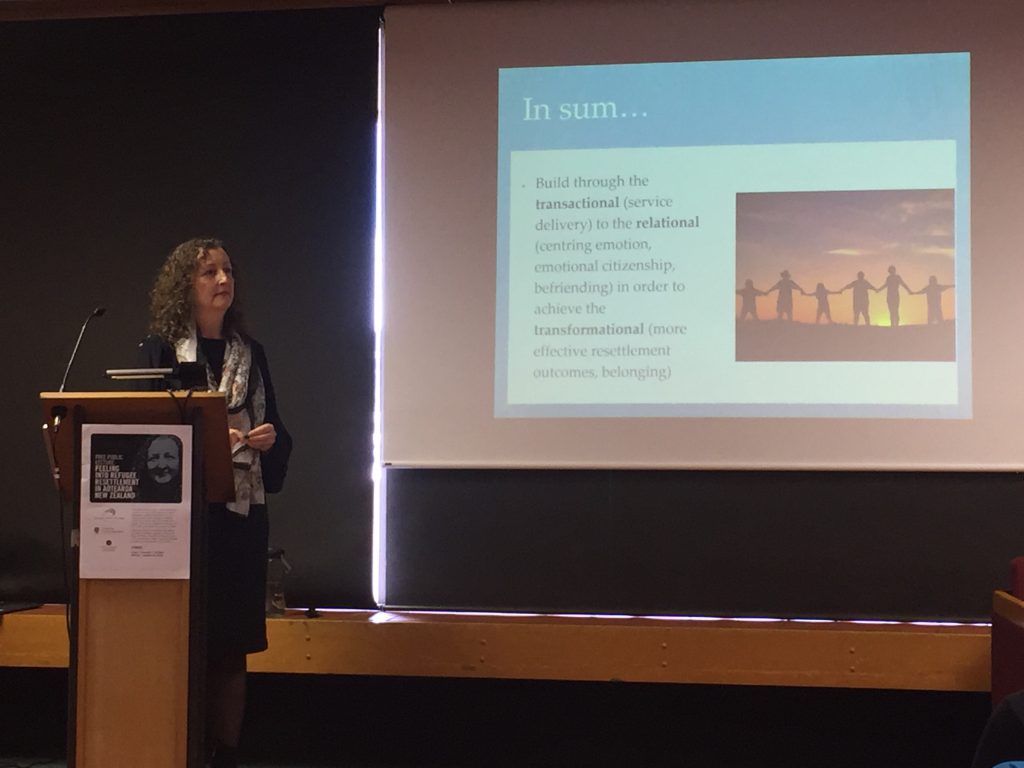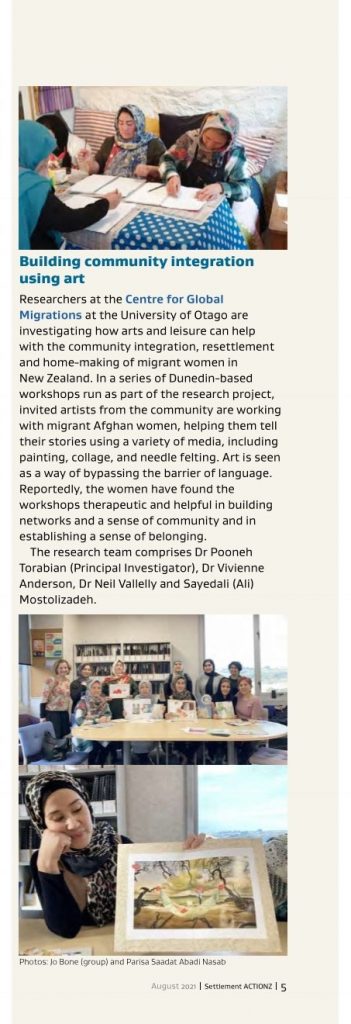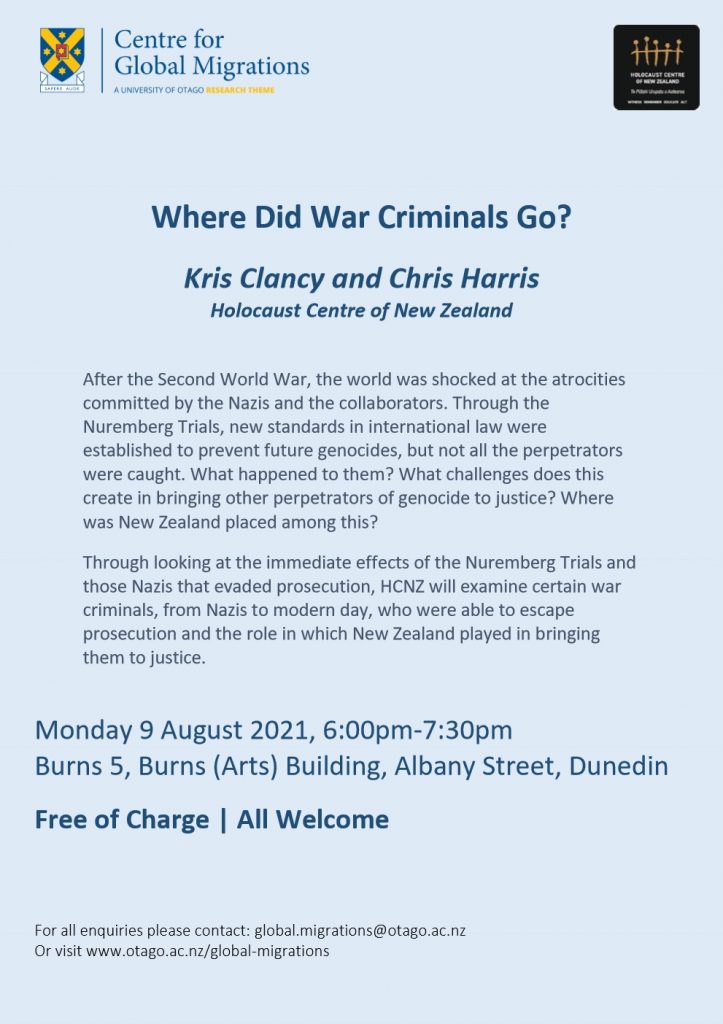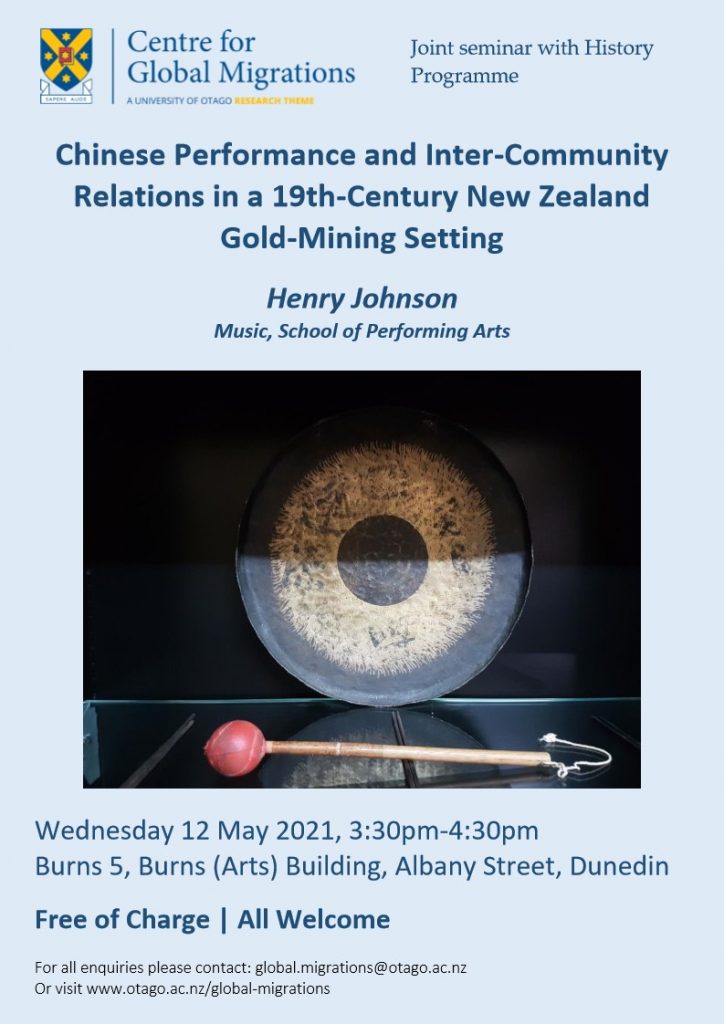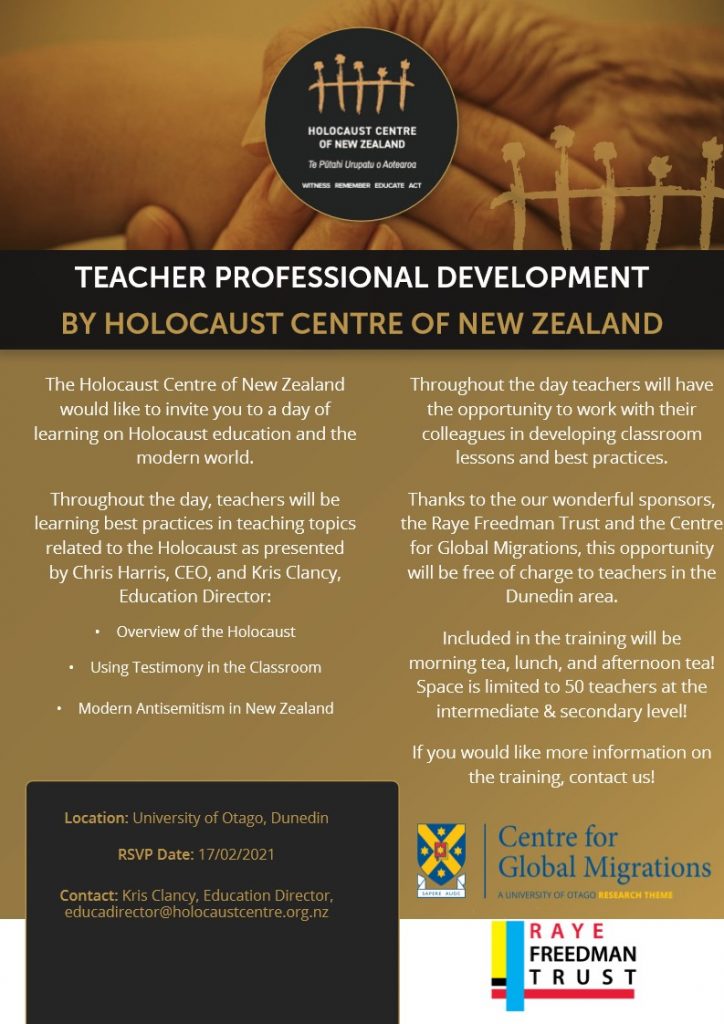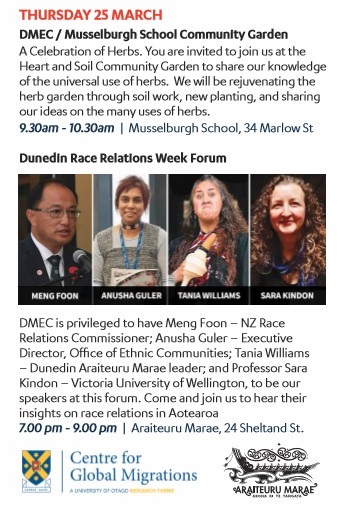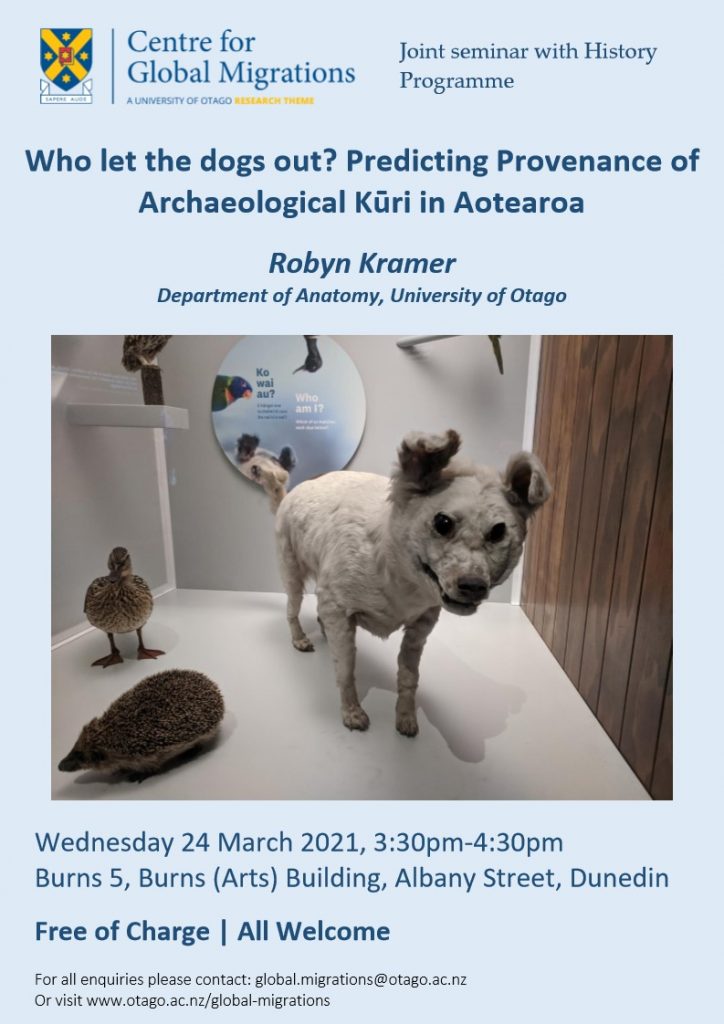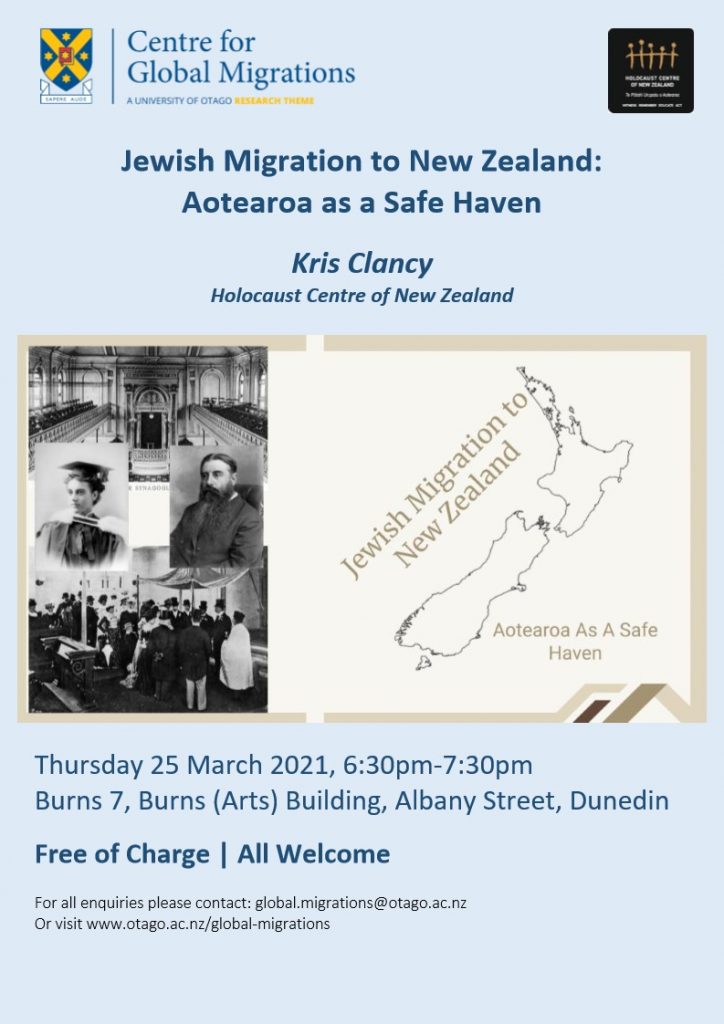Building Community Integration Using Arts
During June 2021 Dr Pooneh Torabian and colleagues at the Centre for Global Migrations worked with local Dunedin community artists to run a series of workshops with migrant Afghan women to help them tell their stories of migration. Using painting, collage, and needle felting, the migrant women were able to bypass language barriers to help build networks and facilitate a sense of community and belonging.
The research team comprises Dr Pooneh Torabian (principal investigator), Dr Vivienne Anderson, Dr Neil Vallelly, and Sayedali (Ali) Mostolizadeh.
The workshops and facilitators were as follows:
- Collage (Jo Bone)
- Sewing (Anne Morrison and Linda Dunn)
- Felting (Chloe Mackenzie)
- Painting (Pamela Brown)
A report on the workshops (below) appeared in the ACTIONZ magazine.
Seminar: Where did War Criminals Go?
Kris Clancy and Chris Harris, Holocaust Centre of New Zealand
Monday 9 August 2021, 6pm
Burns 5 Lecture Theatre, Burns (Arts) Building, Albany Street, Dunedin
After the Second World War, the world was shocked at the atrocities committed by the Nazis and the collaborators. Through the Nuremberg Trials, new standards in international law were established to prevent future genocides, but not all the perpetrators were caught. What happened to them? What challenges does this create in bringing other perpetrators of genocide to justice? Where was New Zealand placed among this?
Through looking at the immediate effects of the Nuremberg Trials and those Nazis that evaded prosecution, Kris Clancy and Chris Harris will examine certain war criminals, from Nazis to modern day, who were able to escape prosecution and the role in which New Zealand played in bringing them to justice.
Seminar: Chinese Performance and Inter-Community Relations in a 19th-Century New Zealand Gold-Mining Setting
Free Seminar
Chinese Performance and Inter-Community Relations in a 19th-Century New Zealand Gold-Mining Setting
Professor Henry Johnson
Music, University of Otago
Wednesday 12 May 2021, 3:30pm
Burns 5 Lecture Theatre, Albany Street
The history of Chinese music making in Aotearoa has received little attention in music research. A hegemonic and Eurocentric lens of scholarly convention has for so often foregrounded some creative arts at the expense of obfuscating others, frequently disparaging or exoticising musical practices that fall within unknown epistemologies. Challenging the selective subject matter of music history, this paper uncovers some of the active and diverse contributions that Chinese musical performance has had in the making of New Zealand. Particular attention is given to instances of inter-community relations in a 19th-century gold-mining setting and the dynamics of cultural diversity of the time.
Holocaust and Antisemitism in New Zealand Teaching Day
The Centre for Global Migrations was delighted to recently co-sponsor a Teacher Professional Development day on teaching the Holocaust in schools.
Kris Clancy, Education Director at the Holocaust Centre of New Zealand, began with a discussion of what, why, and how to teach the Holocaust. He emphasised that although often taught as an overseas event, the Holocaust is also a local story about who came to Aotearoa. Connecting the Holocaust to human rights and what constitutes free speech versus hate speech, Kris encouraged teachers to ensure students learn the repercussions of inaction. He also stressed the importance of using individual stories and images purposely and to avoid role plays. Encouraging an interdisciplinary approach, teachers then worked through a survivor’s personal testimony and workshopped some lesson plans. Kris concluded the informative day with an overview of past and present antisemitism in New Zealand.
Dunedin Race Relations Week Forum 2021
We are delighted to be co-sponsoring the 2021 Dunedin Race Relations Week Forum featuring the following speakers who will discuss their insights on race relations in Aotearoa New Zealand:
- Meng Foon, New Zealand Race Relations Commissioner;
- Anusha Guler, Executive Office of the Office of Ethnic Communities;
- Professor Sara Kindon, Victoria University of Wellington;
- Tania Williams, Dunedin Araiteuru Marae leader.
The Forum is part of Dunedin Race Relations Week, organised by the Dunedin Multi-Ethnic Council, and takes place on Thursday 25 March 2021 at 7pm at Araiteuru Marae, 24 Shetland Street, Maori Hill, Dunedin.
Further details about other events during Dunedin Race Relations Week (20-28 March 2021) can be found here.
Seminar: Who let the dogs out? Predicting Provenance of Archaeological Kurī in Aotearoa
On Wednesday 24 March 2021 at 3.30pm, the Centre for Global Migrations and History Programme host a joint seminar from Robyn Kramer (Anatomy, University of Otago). Robyn’s abstract is as follows:
Abstract
When Māori settled Aotearoa around AD 1300, they brought kurī with them on their waka (sea-faring canoes). Kurī lived in close quarters and travelled with Māori and were (and still are) considered highly prized, or taonga. Archaeological evidence suggests that early Māori adapted quickly to their new environment and moved rapidly across the landscape of both the North and South Islands. After initial settlement, there were regional differences in settlement patterns, but the true extent of mobility and migration for pre- and post-contact Māori remains unknown and represents the research problem for my PhD.
My doctoral research constructs a map depicting strontium (87Sr/86Sr) variation throughout Aotearoa that I use to investigate the migration and interaction spheres of early Māori and their domesticated dogs, kurī. Human mobility can be predicted using 87Sr/86Sr values derived from dental enamel because teeth record the geochemical signature of food resources ingested during tooth formation and are indicative of childhood residency. Analyzing 87Sr/86Sr involves the destructive analysis of culturally significant human skeletal remains, kōiwi tangata, and this is a major issue in Aotearoa bioarchaeology. This research avoids the need to destroy human remains by using the kurī teeth as a proxy for humans, known as the “Canine Surrogacy Approach”. My research uses a maximum-likelihood assignment model to predict the origin of 80 kurī from 13 NZ archaeological sites to elucidate mobility patterns and potential interaction spheres of pre- and post-contact Māori populations.
Public Lecture: Jewish Migration to New Zealand: Aotearoa as a Safe Haven
Free Public Lecture
Jewish Migration to New Zealand: Aotearoa as a Safe Haven
Kris Clancy
Holocaust Centre of New Zealand
Thursday 25 March 2021, 6.30pm-7.30pm
Burns 7, Burns (Arts) Building, Albany Street, Dunedin
Since its founding as a British colony in the 1800s, Jews have been part of the fabric that makes up New Zealand. From the earliest days as whalers and traders, Jews have helped to shape Kiwi society from well known commercial brands to leading political figures. Still, this safe haven has not always been the land of paradise for Jews fleeing persecution in Europe. Restrictive immigration policies and antisemitism has been a part of this story and continues to shape the New Zealand Jewish community.
Kris Clancy of the Holocaust Centre of New Zealand speaks on the impact of Jews on New Zealand and New Zealand’s response to Jewish immigration at their most important time of need: the Holocaust. There will be an opportunity to ask questions following the talk.
Publication: Refugee Resettlement in Early Twenty-First Century New Zealand
We are delighted to announce the publication of a special journal issue (vol. 17, no.1) of Sites: A Journal of Social Anthropology and Cultural Studies on refugee resettlement in early twenty-first century Aotearoa New Zealand. The publication features several extended papers from our 2018 Refuge in the City conference, along with some new contributions, and book reviews. The publication can be accessed through the journal’s website.
Contents
Introduction (Angela McCarthy)
Former Refugee Voice: Reflection on the Refugee and Resettlement Journey (Govinda Regmi)
Narratives of Navigation: Refugee-Background Women’s Higher Education Journeys in Bangladesh and New Zealand (Vivienne Anderson, Tiffany Cone, Naoko Inoue and Rachel Rafferty)
Former Refugees’ Therapeutic Landscapes in Dunedin, New Zealand (Olivia Eyles and Christina Ergler)
Gaining a Sense of Citizenhsip and Belonging in Aotearoa New Zealand: The Work of Refugee Support Providers (Rachel L. Yzelman and Sophie Bond)
Learning from the Past? Cambodian and Syrian Refugee Experiences in New Zealand, 1979-2019 (Angela McCarthy)
Do We Really Offer Refuge? Using Galtung’s Concept of Structural Violence to Interrogate Refugee Resettlement Support in Aotearoa New Zealand (Rachel Rafferty, Anna Burgin and Vivienne Anderson)
Refugee Voice:’What’s Well Begun is Half Done’: Some Challenges Faced During the First Year of Syrian Former Refugees’ Resettlement (Anonymous)
Afterword (Alison Phipps)
Book Review Essay: Hospitality by Collective Means (Murdoch Stephens): reviewing Sarah Crowther, Working with Asylum Seekers and Refugees: What to Do, What Not to Do, and How to Help; and Lauren Wroe, Rachel Larkin and Reima Ana Maglajlic (eds), Social Work with Refugees, Asylum Seekers and Migrants: Theory and Skills for Practice
Book Reviews of Alison Phipps, Decolonising Multilingualism: Struggles to Decreate (Vini Olsen-Reeder) and Behrouz Boochani, translated by Omid Tofighian, No Friend but the Mountains: Writing from Manus Prison (Jayne Persian)
Summary of talk on ‘Arts-based Research in the Context of Forced Migration and Resettlement’
Report by Neil Vallelly
In her second talk as Visiting Lecturer at the Centre for Global Migrations, Professor Sara Kindon introduced us to the benefits of participatory research in the context of refugee resettlement. Kindon illustrated how participation in community workshops and events fosters collective inquiry and creates alternative spaces for story-telling, which is especially important in refugee communities. As Kindon stated, “participatory research is carried out by local people rather than enacted upon them.” In doing so, it enables participants to be active in practices of meaning-making and to contribute productively to the shaping of social alternatives.
Kindon focused on arts-based participatory research, drawing on a huge number of examples from New Zealand and internationally. We witnessed the “mapping memories” project in Montreal, which provided young refugees the space to recount the stories of their displacement through a variety of artistic methods. Likewise, we were introduced to the idea of “body mapping” in South Africa, where participants use drawings of the body to tell their stories. Numerous examples from New Zealand included painting, diagramming, theatre, mixed media, dance, and puppetry. Through these examples, Kindon argued that arts-based participation can provide access to previously inaccessible spaces, both physical and psychological, through the articulation of bodies involved in collective activity. The humility of learning alongside others, Kindon observed, can provide a new orientation for the participants, introducing each member of the group to a new perspective on the world.
To exemplify the potential of arts-based research, Kindon invited audience members to draw an image without words that represented one of their core values. Audience members then shared these images with one another in small groups, with the other members of the group attempting to decipher the meaning of each image. What we learned as an audience is how meaning is always constructed in relation with others and, instead of treating refugees as objects of analysis, we can research alongside them to create a new and genuinely collective forms of knowledge.
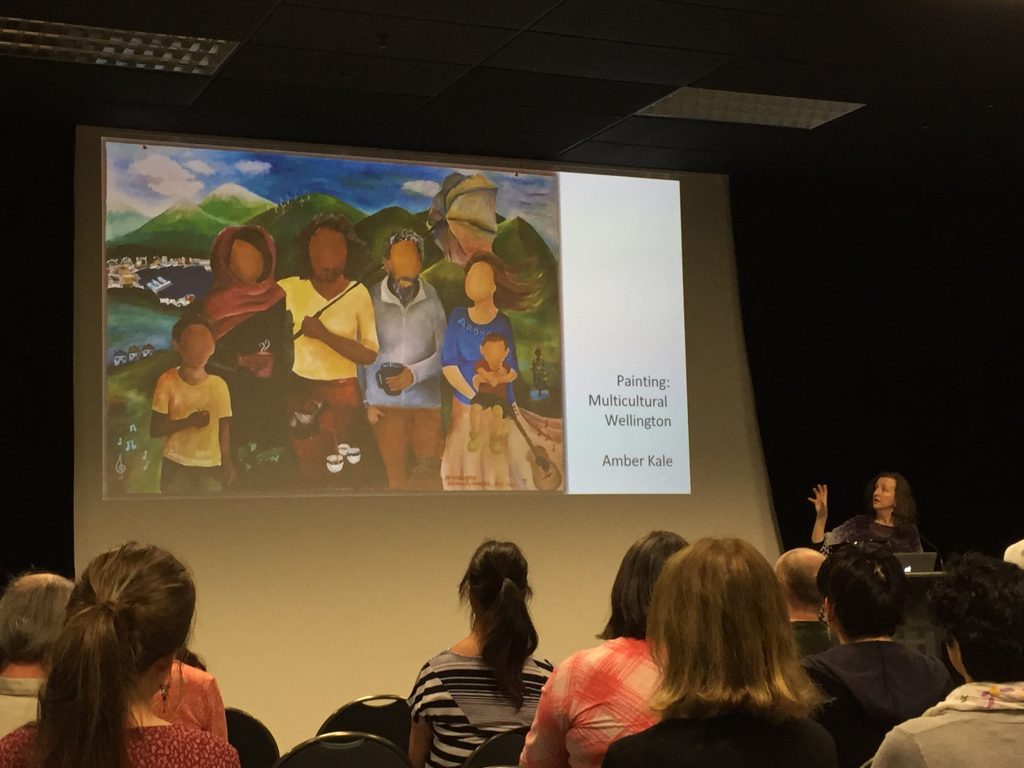
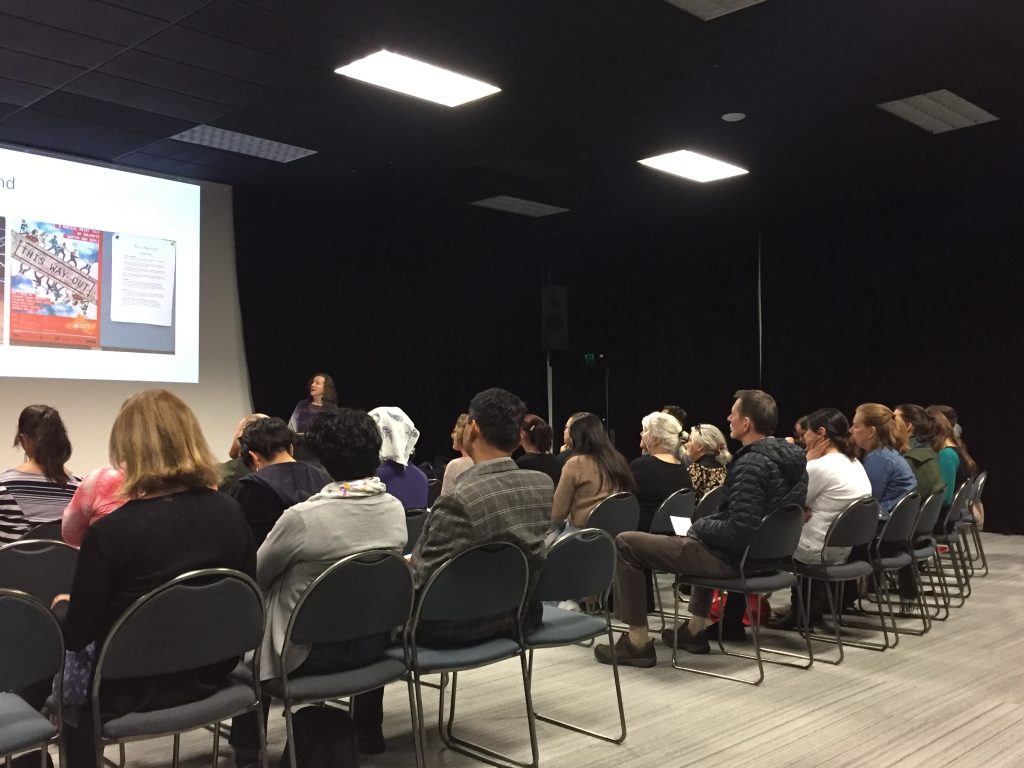
Summary of talk on ‘Feeling into Refugee Resettlement’
Report by Neil Vallelly
“Emotion is everywhere and nowhere in refugee resettlement” argued the Centre for Global Migrations Visiting Scholar Professor Sara Kindon in this well-attended public talk at Dunedin Public Library. Professor Kindon’s point here was that while resettlement is unsurprisingly an emotional process, a whole host of emotions are often disregarded in the resettlement process. In particular, western conceptions of emotions as individual, internal, and pathological often supersede the social and cultural understandings of emotions that refugees possess, especially in terms of trauma. The trope of the traumatised refugee, Kindon observed, leads to an over-medicalisation of emotion in refugee resettlement, which negates the potential for refugees to draw on their own social and cultural practices in dealing with trauma. Furthermore, the resettlement process initially ties refugees to the state, mediated by NGOs and service providers, which produces a top-down and outside-in approach to resettlement, where governments decide priorities and apply these to lives of refugees.
Drawing on emotional geography, affect theory, and her decades of experience of working in refugee resettlement, Kindon asked us to imagine how we might re-think resettlement by placing emotion at the centre of the process. By working from the inside out, Kindon put forward a new strategy that focuses on building a sense of belonging, community, and inclusion for newly-settled refugees, where not only do they feel wanted and welcome but also feel like their knowledge and skills can contribute to shaping Aotearoa New Zealand society. By putting “feeling into resettlement”, Kindon imagined a future in which the governmental and non-governmental agencies involved in refugee resettlement can move beyond the limited and distant approach to emotion that presently dominates western societies. In doing so, these agencies can make space for the emotional worlds of refugees, the role of space and place in their emotions, and the ways in which emotion is produced in the interrelation of bodies. In many ways, Kindon not only posited a new approach to refugee resettlement, but a framework for re-imagining contemporary society in ways that allow emotions to be constantly in flux rather than fixed and instrumentalised. In doing so, Kindon urged us to keep emotions everywhere in order to stop them dissolving into nowhere, as is so often the case when emotions are medicalised and pathologised. This is a valuable lesson for all of us, no matter which field we work in.
